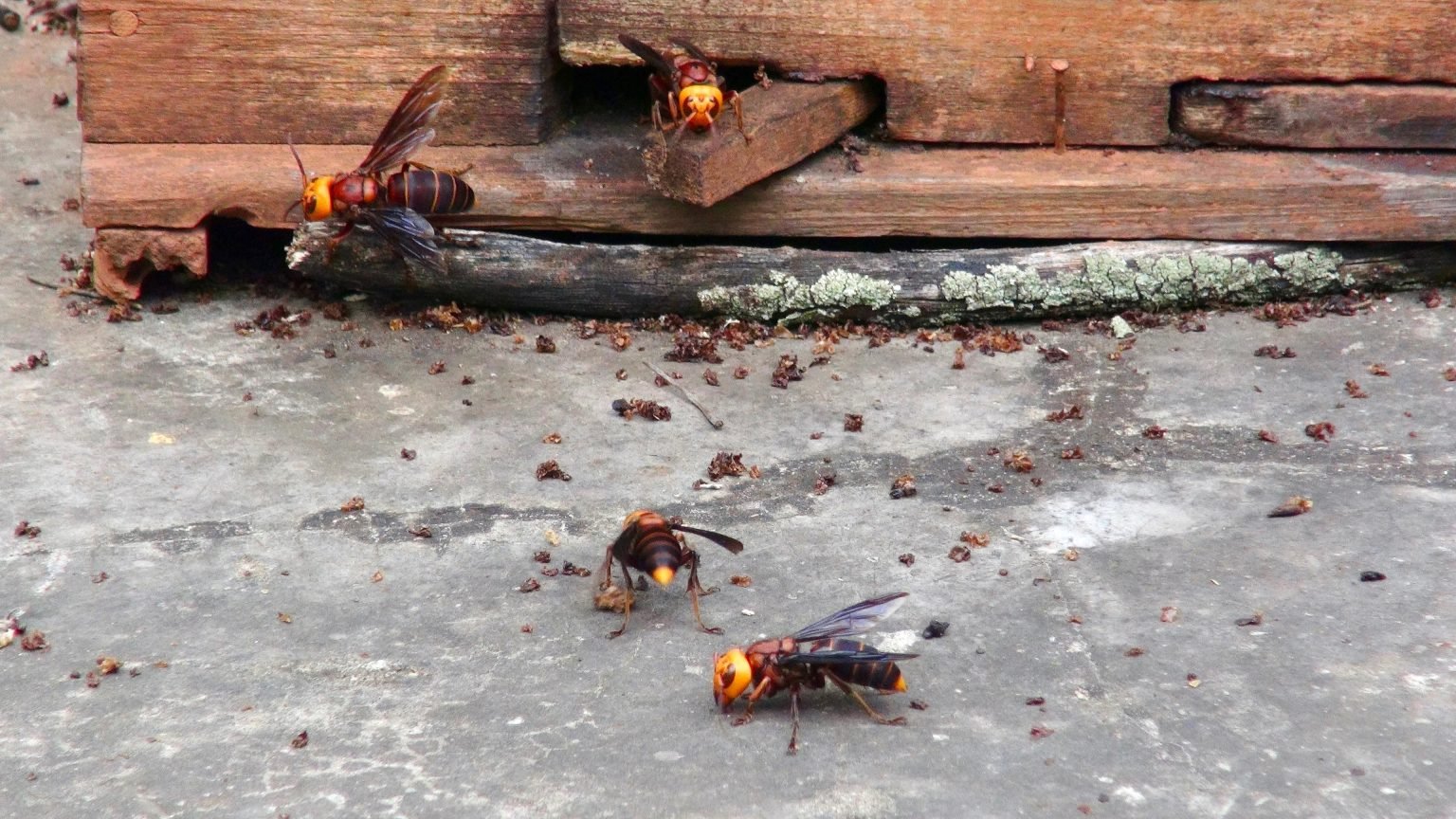Sex Pheromone Could Be Key to Stopping Giant “Murder” Hornet Invasion
By UNIVERSITY OF CALIFORNIA - SAN DIEGO

Multiple Asian giant hornets attack a honey bee colony, Credit: Professor Dong Shihao
Chemicals used as bait to trap and track so-called ‘murder
hornets’ as they expand their footprint in the Western United States.
The world’s largest hornet has been the focus of
extensive news coverage of late due to its menacing appearance and expanding
footprint in North America.
But while the “murder hornet” label attached to
the Asian giant hornet (Vespa mandarinia)
may be an overdramatization of its danger, researchers agree that the invasive
species is destructive and threatens North American bee populations and
millions of dollars in crop production. Because honey bees offer few defenses
(other than a “heat ball” defense seen in the video below), giant hornets can
rapidly destroy entire bee colonies.
“My usual plea is that people should stop calling them ‘murder hornets’ because they are large and perhaps frightening but not truly murderous,” said James Nieh, a Division of Biological Sciences professor and bee researcher at the University of California San Diego. “They are amazing social insects, but they don’t belong in North America and harm our critical bee populations, so we should remove them.”
But how to eliminate
them is not clear. Even knowing where they occur—thus far reported in Canada
and the Pacific Northwest—has been difficult to determine.
As one possible solution, Nieh his colleagues in China have developed a method for identifying the Asian giant hornet’s presence and possibly accelerating its removal. In the journal Current Biology, the researchers reveal the identification of three major components of the Asian giant hornet queen’s sex pheromone, an achievement that could be used as bait to trap and track the insects.
Using gas chromatography and mass spectrometry, along with experiments spanning two years, Nieh and his colleagues identified the major chemicals in the sex pheromone as hexanoic acid, octanoic acid and decanoic acid, compounds that can be readily purchased and deployed immediately in the field.
In a previous study, Nieh and his
colleagues used a comparable
approach to identify the female sex pheromone of a related
Asian hornet species (Vespa velutina). In their new
study, the researchers placed traps near hornet nests, locations where they
typically mate, and captured only male hornets, but no females or other
species. During their experiments the scientists tested the hornet’s neural
activity and found that male antennae are highly sensitive to the pheromone.
“The males are drawn to the odors of the females
since they typically mate with them near their nests,” said Nieh. “In two field
seasons we were able to rapidly collect thousands of males that were attracted
to these odors.”
Scientists are not clear how Asian giant hornets
first came to North America. In recent years they have been documented in
British Columbia and Washington state, while modeling simulations indicate they
could rapidly spread throughout Washington, Oregon and possibly the eastern
U.S.
Although the experimental pheromone hornet traps
were set close to bee colonies, Nieh hopes they can be deployed in multiple
field locations to evaluate whether they can chemically attract the hornets
over distances of a kilometer or more.
“Because these pheromone-based traps are fairly
inexpensive I think they could be readily deployed for sampling across a large
geographic range,” said Nieh. “We know where they have been found, so the big
question is whether they are expanding. Where is that invasion front?”
Instead of patenting the identification of the
sex pheromone, Nieh and his colleagues decided to publish their findings as
quickly as possible in hopes of providing a possible solution to help document
the hornet’s spread. As more pheromone bait traps are deployed, a map could
emerge along with predictive models to assess where and how rapidly they are
spreading.
“We hope that others, especially in invaded
areas, will take the protocol we have established and test this method,” said
Nieh. “We’ve described the chemical blends needed for these traps, which could
reduce the number of males available to mate with females to help depress the
population but primarily would help us figure out where they are.”
Reference: “Identification of giant hornet Vespa
mandarinia queen sex pheromone components” by Shihao Dong, Aili Sun, Ken Tan
and James C. Nieh, 14 March 2022, Current Biology.
DOI: 10.1016/j.cub.2022.01.065
Nieh’s coauthors on the Current Biology study include Shihao Dong and Ken
Tan of the Chinese Academy of Sciences and Aili Sun of Yunnan Agricultural
University.
Funding: CAS Key Laboratory of Tropical Forest
Ecology, Xishuangbanna Tropical Botanical Garden, , CAS 135 program, National
Natural Science Foundation of China, China Postdoctoral Science Foundation.